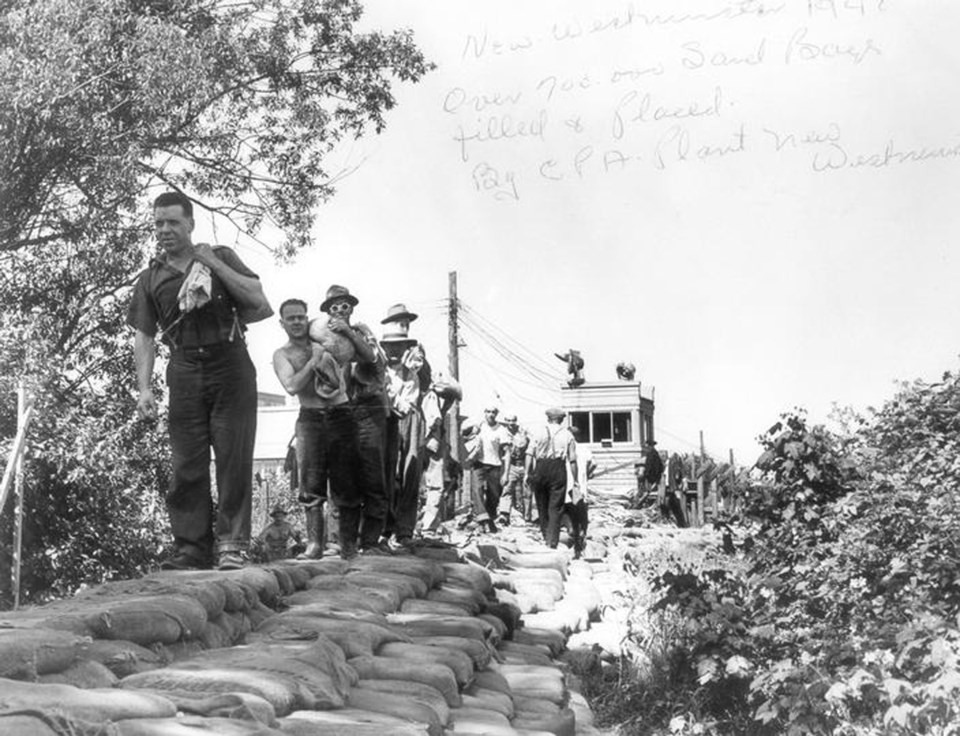Over the past few weeks, the news has been filled with stories of rising water in rivers, creeks, and lakes and of flooding in areas around the province. For those who live around New Westminster and watch the Fraser River, it has become a daily activity to note the level of the river at high and low tide as well as the amount of debris floating by on its downstream voyage.
The news has also been filled with references to the massive 1948 flood and how things worked out at that time, 70 years ago. If you are familiar with river history in B.C., then you know that there are other years of extensive flooding in our past. Floods in 1894 truly stand out, as do 1882 and 1876. A quick look at our flood research notes offers some interesting information from the 1882 high water.
A couple of single lines in the paper of May/June 1882 summarized the times: "Weather continues brilliantly fine, river is rising very fast" and "The river is rising, and as a matter of course, the number of salmon taken has fallen off."
From Yale the following line in a report points to a situation that sounds hauntingly familiar: "The Fraser is booming. Last year we had too much fire, now we have too much water. Buildings on the river are partially submerged and those in most danger are supported by logs, stone and brush. The wagon road, up line, is covered at such an extent that travel is at a standstill."
At Matsqui, the flood gates at the dyke had given way and a large area was inundated by the river's rushing water. "The giving way of the flood gates to this very important work is a great misfortune not only for Mr. Sword but for the farmers and landowners in the vicinity who are now exposed to all the difficulties that beset them before the dyke was constructed."
In the Chilliwack area the water was overwhelming: "Sumas prairie looks like a gulf and Chilliwack looks no better except there is no heavy sea. The water is into almost all the houses, and canoes are plying on all the roads the loss is very heavy, but fortunately no lives lost up to the present."
As the effects of the flooding became more well-known, descriptions of buildings, roads and rail lines were reported. "The railway has been washed away in many places the water is up to the top of Kimball and Gladwin's warehouse door and it is liable to take a trip to salt water any moment. Barnard's stables are in water about four feet, the horses are taken to the old stables on the hill. River still rising about 10 inches per day, wagon road gone in several places. The four-mile bridge is gone and the suspension bridge is in great danger."
This is a B.C. story that repeats and bears watching.



